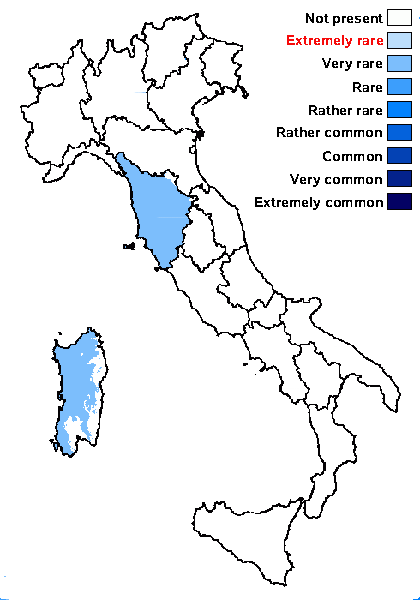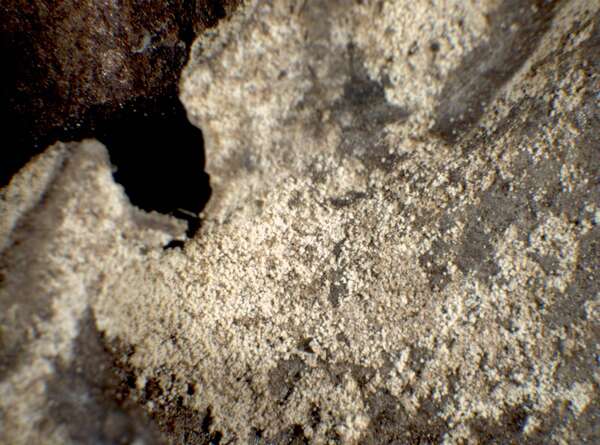Lepraria umbricola Tønsberg
Sommerfeltia, 14: 206, 1992.
Synonyms:
Distribution: C - Tosc (Baruffo & al. 2006), Sar (Zedda 2000a, 2002, Zedda & Sipman 2001, Baruffo & al. 2006).
Description: Thallus leprose, diffuse and poorly delimited, usually rather thin, grey-green, dark green to dull blue-green, finely granular with a powdery appearance, the granules small, 0.06-0.1 mm in diam., the surface compact, mostly without projecting hyphae. Medulla absent or very thin, white; hyphae below thallus usually sparse to abundant in cracks in the substratum, white or sometimes partly brown. Photobiont chlorococcoid. Spot tests: thallus and subthalline hyphae K+ bright lemon yellow, C-, KC-, P+ bright orange-yellow, UV-. Chemistry: thamnolic acid, sometimes with traces of atranorin and roccellic (angardianic) acid. Note: a warm-temperate species found on basal parts of old trunks with acid bark, often in crevices and niches at the base of the boles, more rarely on siliceous rocks and mosses, sometimes on and on shaded sandy soil, mostly in deep shade and in rain-sheltered situations; certainly more widespread in Italy.
Growth form: Leprose
Substrata: rocks, bark, soil, terricolous mosses, and plant debris
Photobiont: green algae other than Trentepohlia
Reproductive strategy: mainly asexual, by soredia, or soredia-like structures (e.g. blastidia)
In underhangs rarely wetted by rain
Commonnes-rarity: (info)
Alpine belt: absent
Subalpine belt: absent
Oromediterranean belt: absent
Montane belt: very rare
Submediterranean belt: absent
Padanian area: absent
Humid submediterranean belt: very rare
Humid mediterranean belt: very rare
Dry mediterranean belt: absent

Predictive model
Herbarium samples
Growth form: Leprose
Substrata: rocks, bark, soil, terricolous mosses, and plant debris
Photobiont: green algae other than Trentepohlia
Reproductive strategy: mainly asexual, by soredia, or soredia-like structures (e.g. blastidia)
In underhangs rarely wetted by rain
Commonnes-rarity: (info)
Alpine belt: absent
Subalpine belt: absent
Oromediterranean belt: absent
Montane belt: very rare
Submediterranean belt: absent
Padanian area: absent
Humid submediterranean belt: very rare
Humid mediterranean belt: very rare
Dry mediterranean belt: absent

Predictive model
| Herbarium samples |
 INDEX FUNGORUM
INDEX FUNGORUM
 GBIF
GBIF




